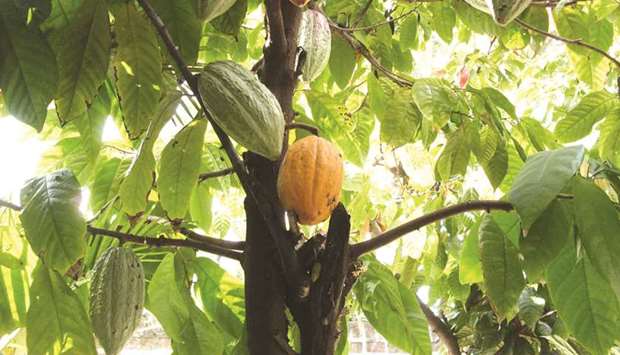Cocoa prices ended 2018 with strong gains, leading generally firmer agricultural markets, but the year marked falls for most major commodities as increasing global economic uncertainty hit metals and oil.
Worries about slackening growth in China, the world’s second-largest economy, and trade talks between Washington and Beijing will be the main focus in the new year, analysts said, while oil markets fear a growing oversupply.
“We had a dramatic decline in the crude oil market as global supplies are rising, not just the United States but also Saudi Arabia and Russia,” said Phin Ziebell, senior economist at National Australia Bank, who covers agriculture, oil and gas markets.
“(However) agriculture markets, cocoa and wheat, in particular have had a strong performance, which has been driven by fundamentals,” he said.
London cocoa prices climbed almost 30% in 2018, recovering from six-year lows, as dry weather in top producer Ivory Coast boosted speculative fund inflows, although supply is now picking up. Wheat is also set for a positive finish, up around 20%, on expectations of strong demand for US cargoes as the rival Black Sea region runs of out of supplies. Soybeans, though, have been hit by the US-China trade war.
Benchmark Brent crude oil futures, tipped by some analysts in September to top $100 a barrel, instead plunged by almost 40% from their 2018 peak a month later of $86.74 to end the year around $53.75.
The slump came after the Washington gave unexpectedly generous sanction waivers to Iran’s biggest oil buyers and as concerns over a Sino-American trade dispute dented the outlook for oil demand.
The United States also emerged as the world’s biggest oil producer in 2018 amid rising global supplies.
Oil markets went “into a tailspin in the last few months of this year, as US production continued its unstoppable pace of growth and the (US) Administration pushed weaker than expected enforcement of sanctions on Iran,” said US investment firm Height Securities.
US crude lost a quarter of its value in 2018, while Brent is down around 20%.
In grain markets, Chicago wheat futures gained by almost a fifth, rising for a second year in a row after several years in the doldrums, and boosted by hopes of higher demand for US cargoes in the first half of 2019.
Surplus wheat supplies are dwindling in the world’s biggest exporter Russia after strong sales since July, while Australia — typically the No 4 exporter — is suffering from a second year of drought.
The Washington-Beijing trade war has dragged down US soybean prices as China, which buys 60% of the oilseed traded worldwide, has been taking mainly Brazilian cargoes for much of 2018.
This is expected to result in large unsold stocks in the United States, although recent signs of improving trade relations between the two countries could support prices early next year.
Malaysian palm oil futures, however, fell about 15% in 2018 due to a glut, while Tokyo rubber dropped nearly 18% on China growth worries.
Concerns over slowing growth in top industrial metals consumer China also took a toll on zinc, copper and aluminium prices.
London Metal Exchange zinc suffered the biggest decline in 2018 among base metals with a loss of more than 26%, copper gave up about 16% and aluminium 18%.
Chinese steel prices are on track for a positive finish in 2018 as the country’s crackdown on pollution forces mills to reduce production, curbing supplies in the world’s top consumer.
However, prices for steel making raw material iron ore fell.

Cocoa prices ended 2018 with strong gains, leading generally firmer agricultural markets, but the year marked falls for most major commodities as increasing economic uncertainty hit metals and oil


